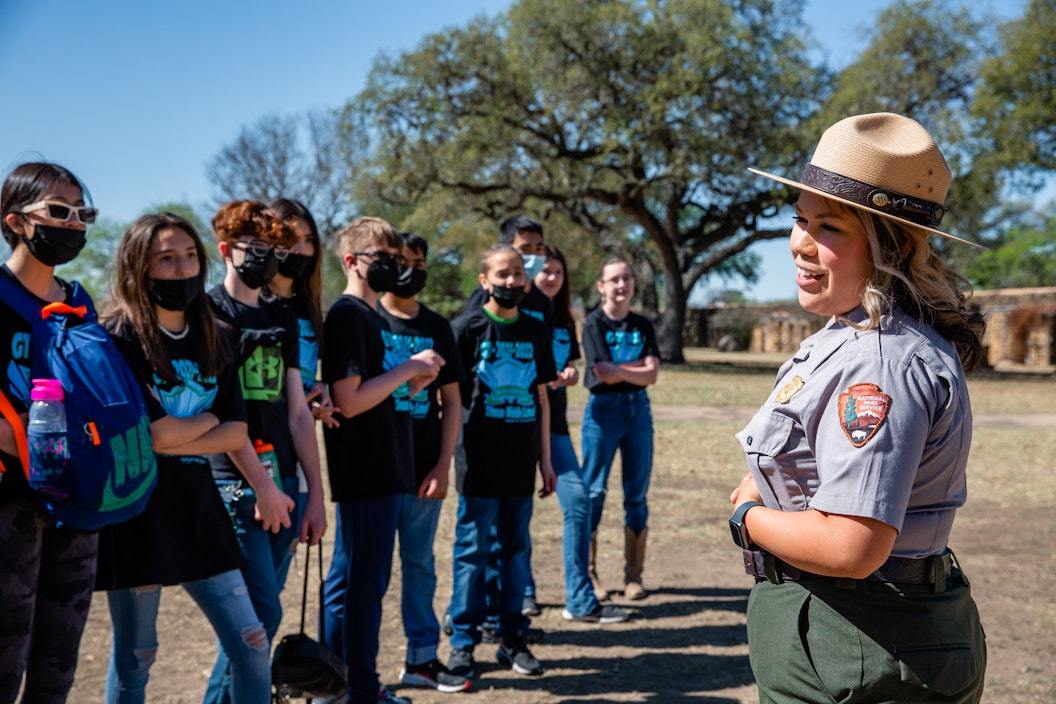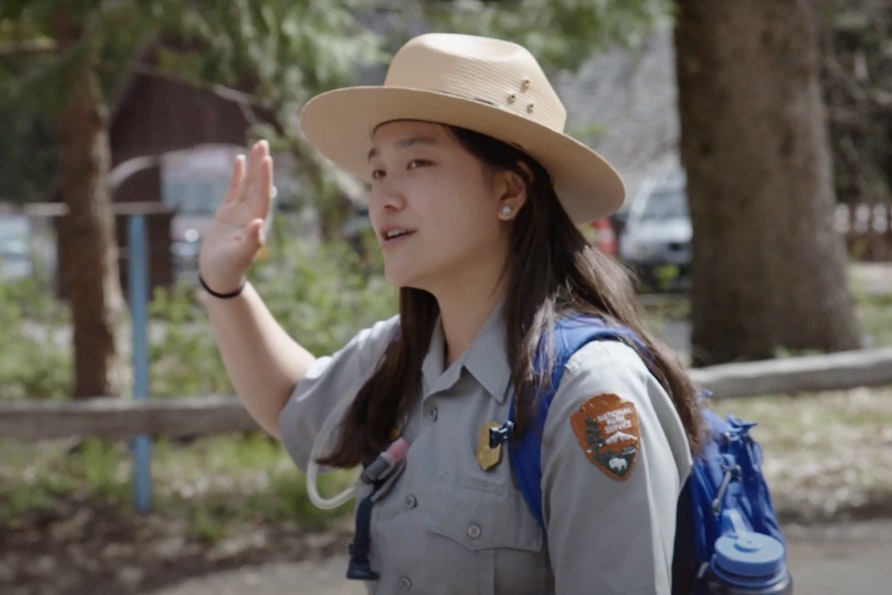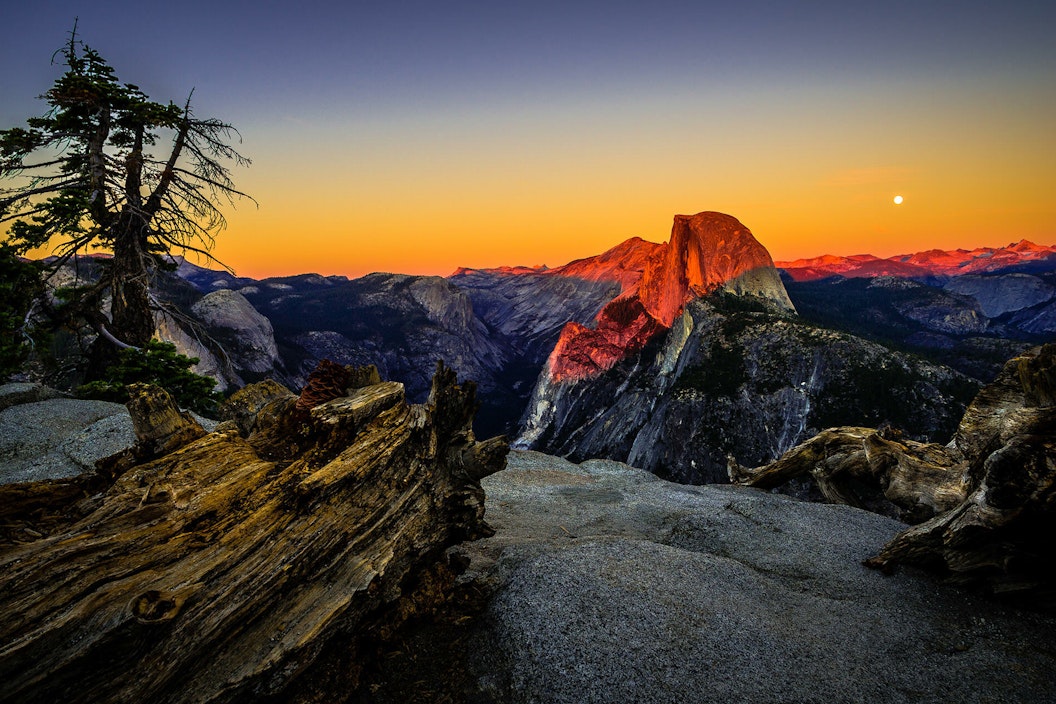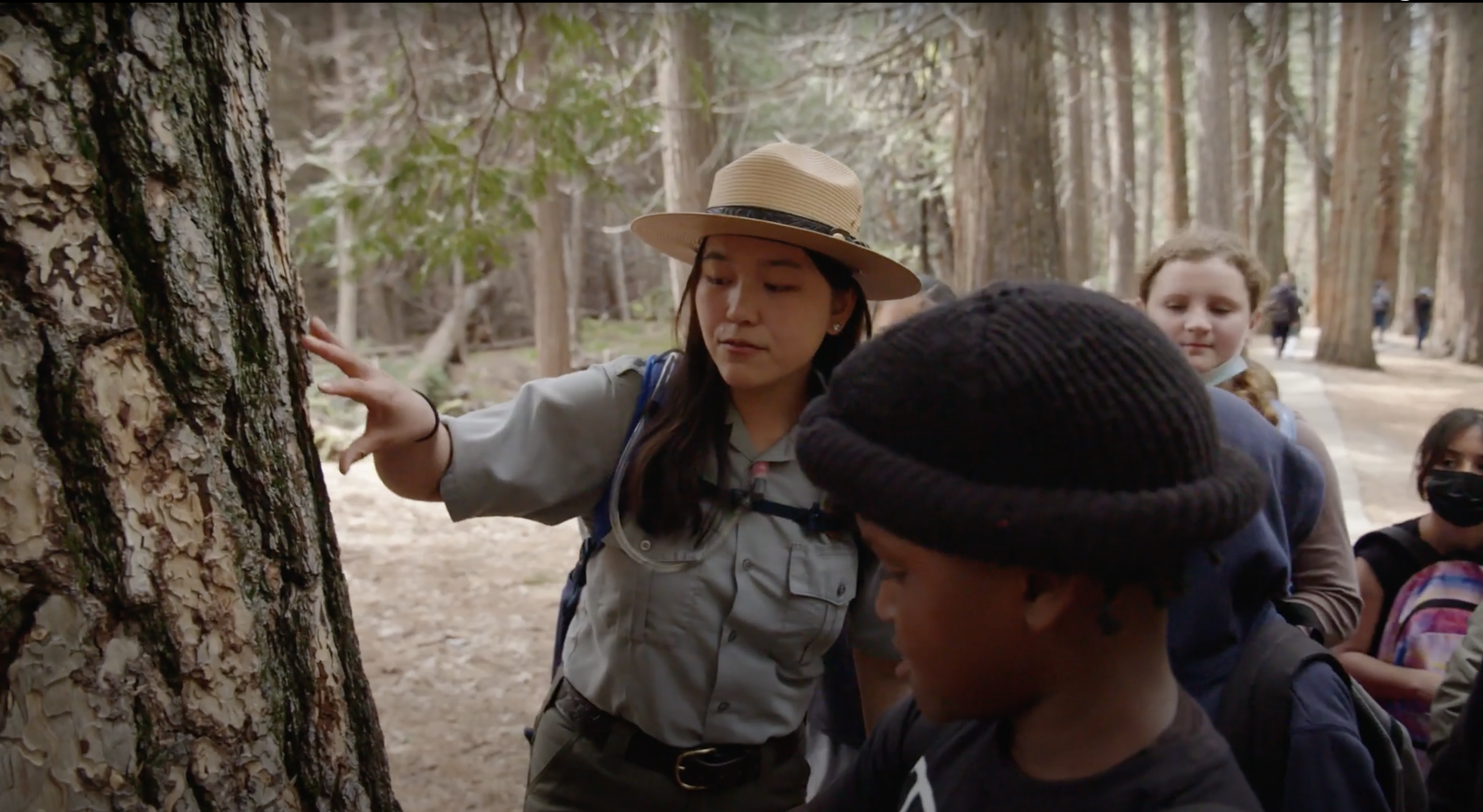
The Next (And Next) Generation of Park Stewards
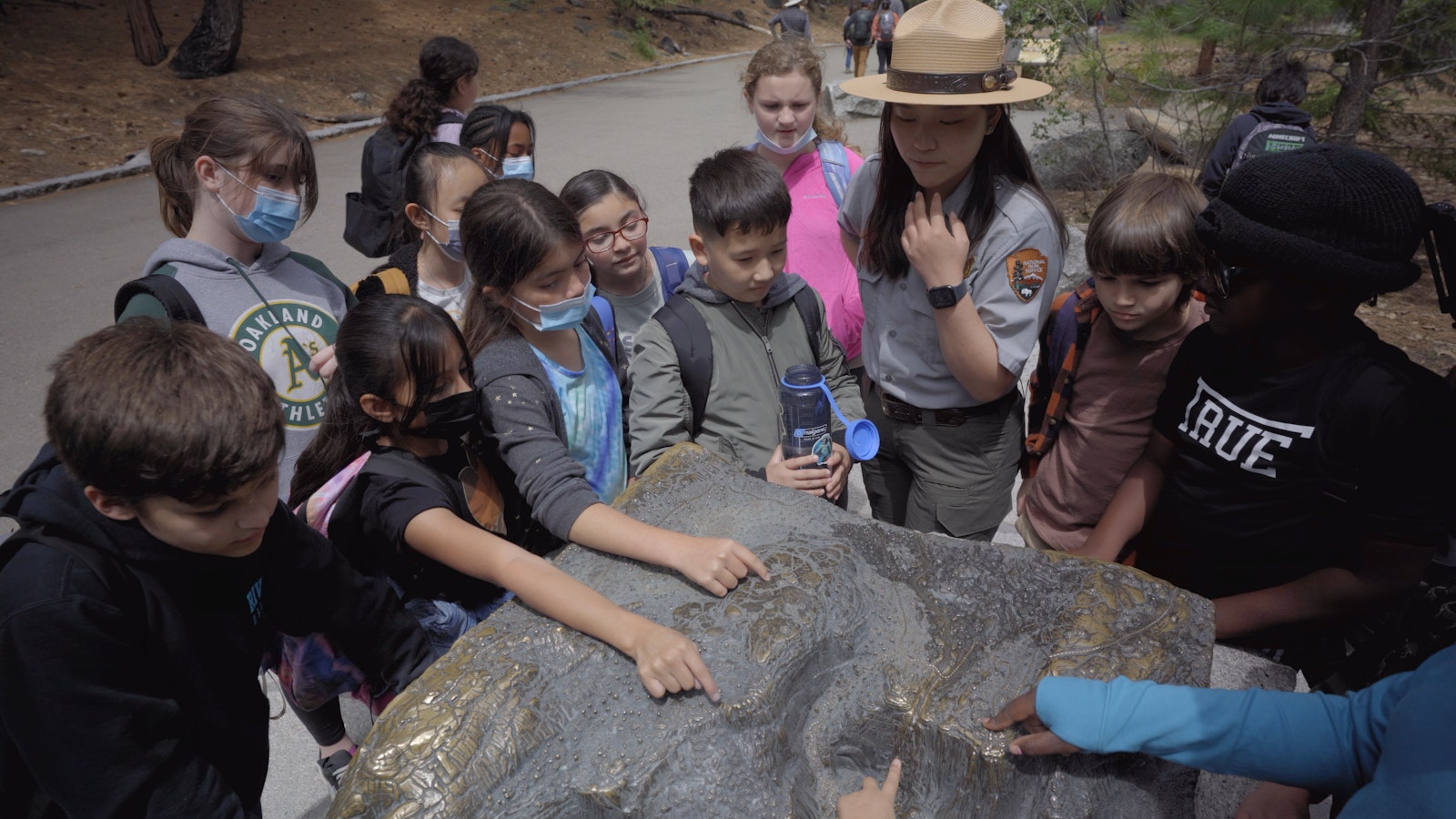
.
.
“Were there ever avalanches?” “How was Half Dome formed?” “What are mountains made out of?”
The joyful barrage of fourth grader questions ranged from “Are we allowed to eat snacks over here?” to the surprisingly insightful, “Why do all rocks feel different?”
And the questions kept coming as the fourth-grade class from Merced, California explored the ecology, geology, and history of Yosemite National Park. Each question and response leading to the next as they marveled at Half Dome, hiked through Cook’s Meadow, and stood in the spray under Yosemite Falls.
Partially funded through the National Park Foundation’s (NPF) Open OutDoors for Kids program, the field trip connects fourth graders from the gateway community of Merced with the park just beyond their backyard. Merced is about 80 miles from Yosemite Valley, but for most of the students, this is the first time in a national park.
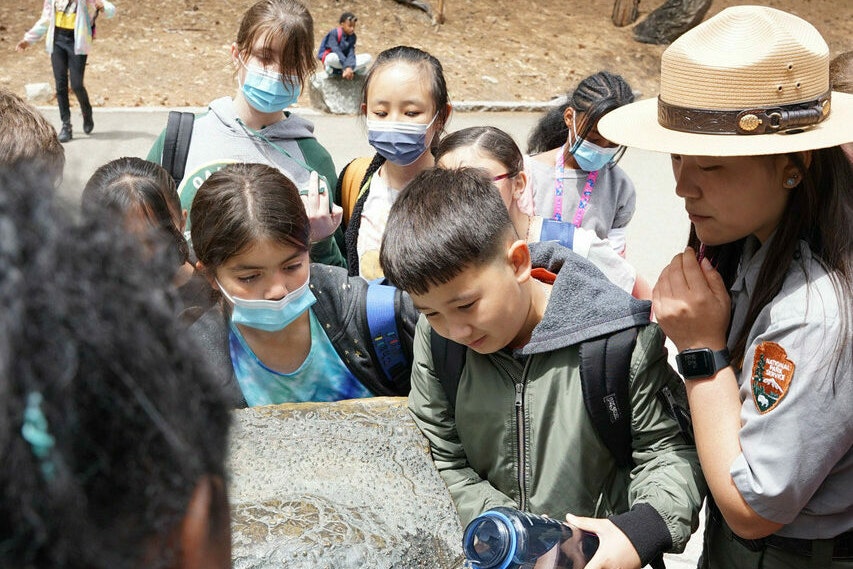
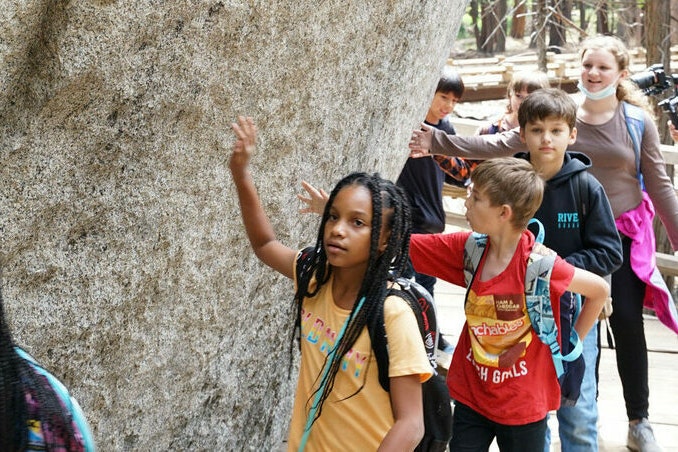
“They can see the Sierra Nevada from where they live on a clear day. And though they can see it, most of them have not been to it. There’s a big difference in looking at mountains from a distance and feeling them around you,” said Jesse Chakrin, Supervisory Park Ranger and Director of the Yosemite Leadership Program. “One of the things that’s really cool about Yosemite is, it’s not subtle. It’s a place that is vast and giant and you feel the awe and wonder, just as you drive into the valley. It’s impossible to ignore.”
Reinventing The Wheel: A New Model with Near-Peer Mentors
It’s easy to wear out adjectives describing Yosemite National Park. While the beauty of the 1,200 acre park is anything but subtle, Chakrin knows that ensuring the generation of park stewards requires more than marveling at the awe and wonder of places like El Capitan and Half Dome.
Realizing the need for students to not only connect with the park, but to also connect with rangers, he launched and oversees the Yosemite Leadership Program, a near peer mentoring program connecting University of California, Merced college students, who serve as uniformed park rangers, with younger students on field trips.
“If you connect people who are closely related in age to students, they get to see themselves in that person in a different way than they might see someone who’s further along in their career, or at a place where it might take them many years to get to,” said Chakrin.

When he first launched a version of today’s Yosemite Leadership Program, Chakrin was bringing high school students to meet the superintendents and division chiefs. He wanted the students to feel honored and respected by meeting with the top park leaders.
As he saw the types of conversations students had with park leadership compared to their conversations with younger park rangers, Chakrin quickly realized that it was more valuable and created stronger connections for the students to meet entry level staff. Meeting with entry level rangers allowed the students to picture themselves in the park system, in a job and role that was attainable in the near future.
So as Chakrin grew the program, he began recruiting college students from University of California, Merced to lead the field trips of fourth graders and serve as near peer mentors.
It’s all about connecting people who are close enough in age that they’re not irrelevant, Chakrin says.
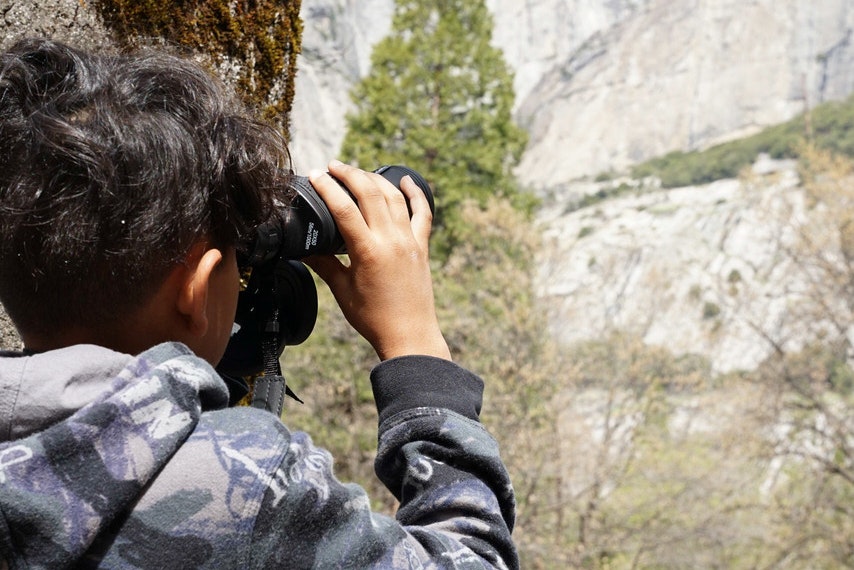
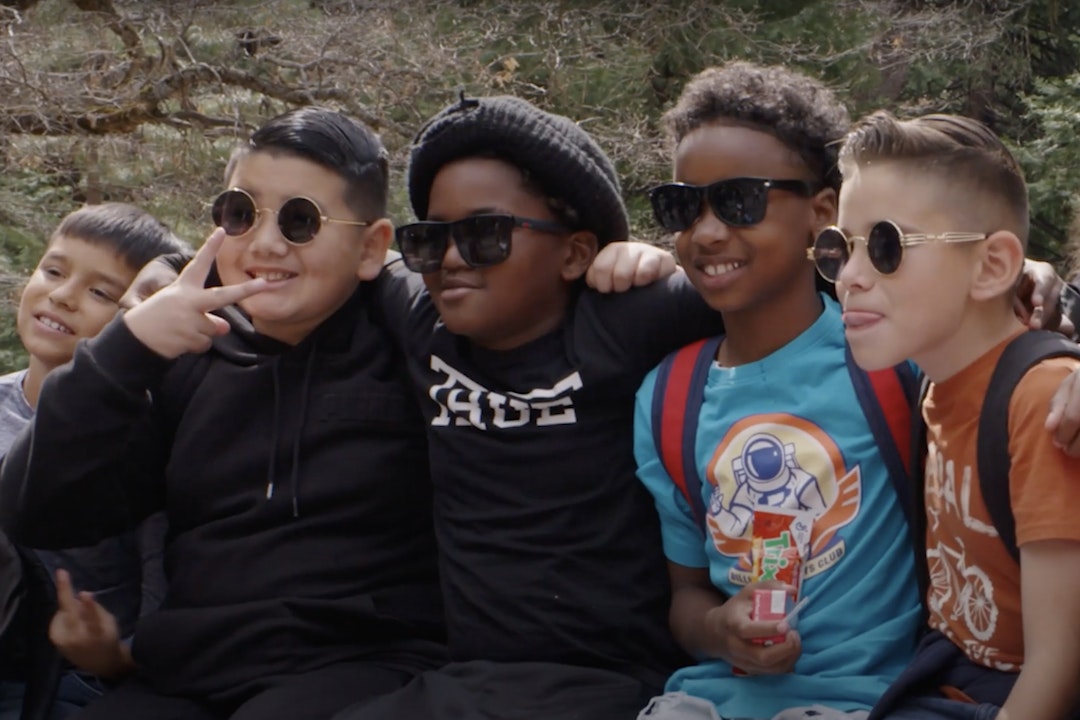
Not only are they close in age, the college students and fourth graders are from the same community, so the rangers truly understand the different barriers some families in their community face when considering a visit to a national park. In the near-peer mentor model, the college student ranger’s job is to not only lead the field trip, but to serve as a welcoming face for historically excluded communities.
Chakrin’s near peer mentor model aligned perfectly with NPF’s Open OutDoors for Kids program, grants that connect fourth graders with parks. Costs like transportation are often an obstacle for visiting parks, even for students who live nearby. That’s why the Open OutDoors for Kids grant covers the cost of bus transportation from the students’ schools in Merced to Yosemite National Park.
“As we designed programming, we designed to overcome some of the structural barriers that exist in our society,” Chakrin said. “We want people to have the experience of family...to be welcomed like they’re family, to know that this place is theirs and that they belong here too.”
The Student Ranger Leading the Way
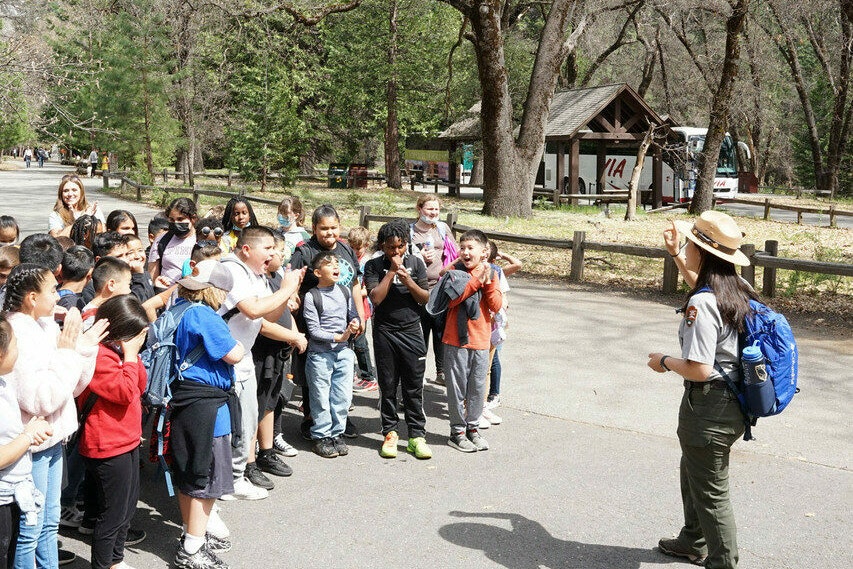
Calista Lum is one of those college student rangers. She’s a physics major and has already accepted a spot to earn her PhD in physics after graduation. And just like the fourth graders, when comes to Yosemite, she makes the two-hour drive from her school, University of California, Merced.
“What is something different that you notice between here and Merced?” Lum asked the class on their group hike.
“There’s trees here, there’s mountains here,” one fourth grader said.
“I see cows in Merced. I don’t see any cows here,” another added.
Lum chimed in that she sees cows outside her school as well.
Lum and the students are closer not only in age compared to other park rangers, but also share lived experiences from Merced. The class is delighted to hear Lum is a student, too, and more than a few share they have siblings in college as well.
For Lum and many of the students in Miss Bissell’s fourth grade class and the other classes from Merced, seeing your identity represented in a national park or in a position of power can leave a lasting impression.
While Lum says she loves when the students tell her they want to be a park ranger when they grow up, seeing representation in uniform on federal lands can have an impact no matter what path they follow.
“It doesn’t' just apply for being in the park service. It helps them see themselves in spaces beyond that,” Lum said.
After leading the class on an ecology hike through Cook Meadow, Lum stopped with the students at the edge of the river. She challenged them to use almost all of their senses – sight, smell, touch, and hearing – to take in the enormity, vastness, and incredible beauty of the valley. Each fourth grader drew a soundscape, a representation of what they hear and their day in Yosemite. One student drew a picture of Lum.
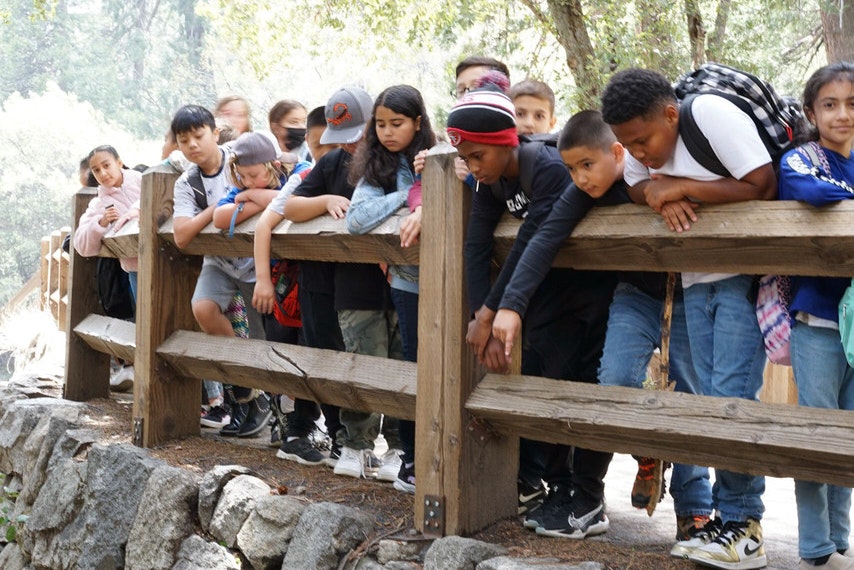
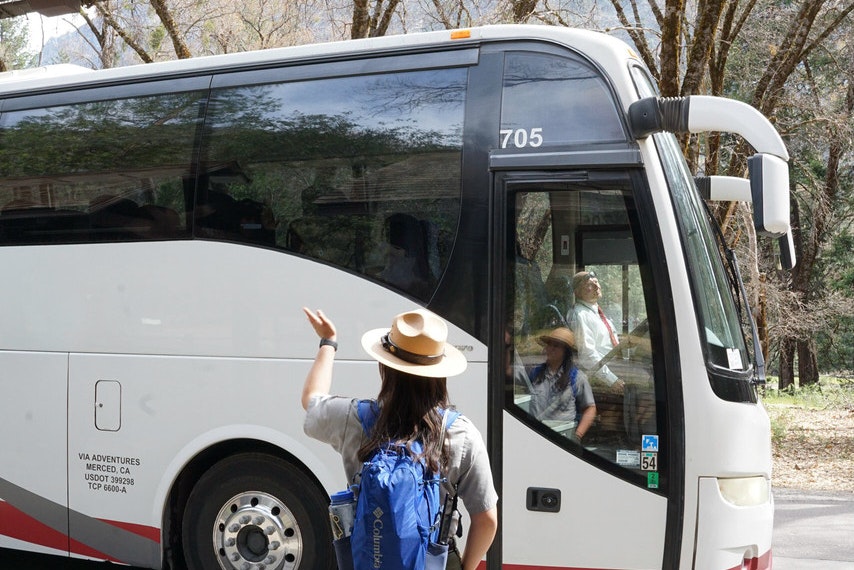
For Lum, the picture was a reminder of why she loves being a student ranger.
“It feels so amazing to think that maybe I’m the person that stuck in this kid’s memory,” Lum said. “It feels like a huge responsibility because in a way I feel like I am now the face of Yosemite for this kid... Ultimately, what I would want if for these kids to explore more. So if I can encourage that at all in the slightest, that’s all I want.”
Chakrin and Lum both agreed, while the ecology, geology, and history of the park are important. The goal of each field trip is for every student to walk away with a sense of belonging.
“I want them to know that this is a place for them and a place that they can experience again,” Chakrin said.
Connecting Generations of Park Stewards
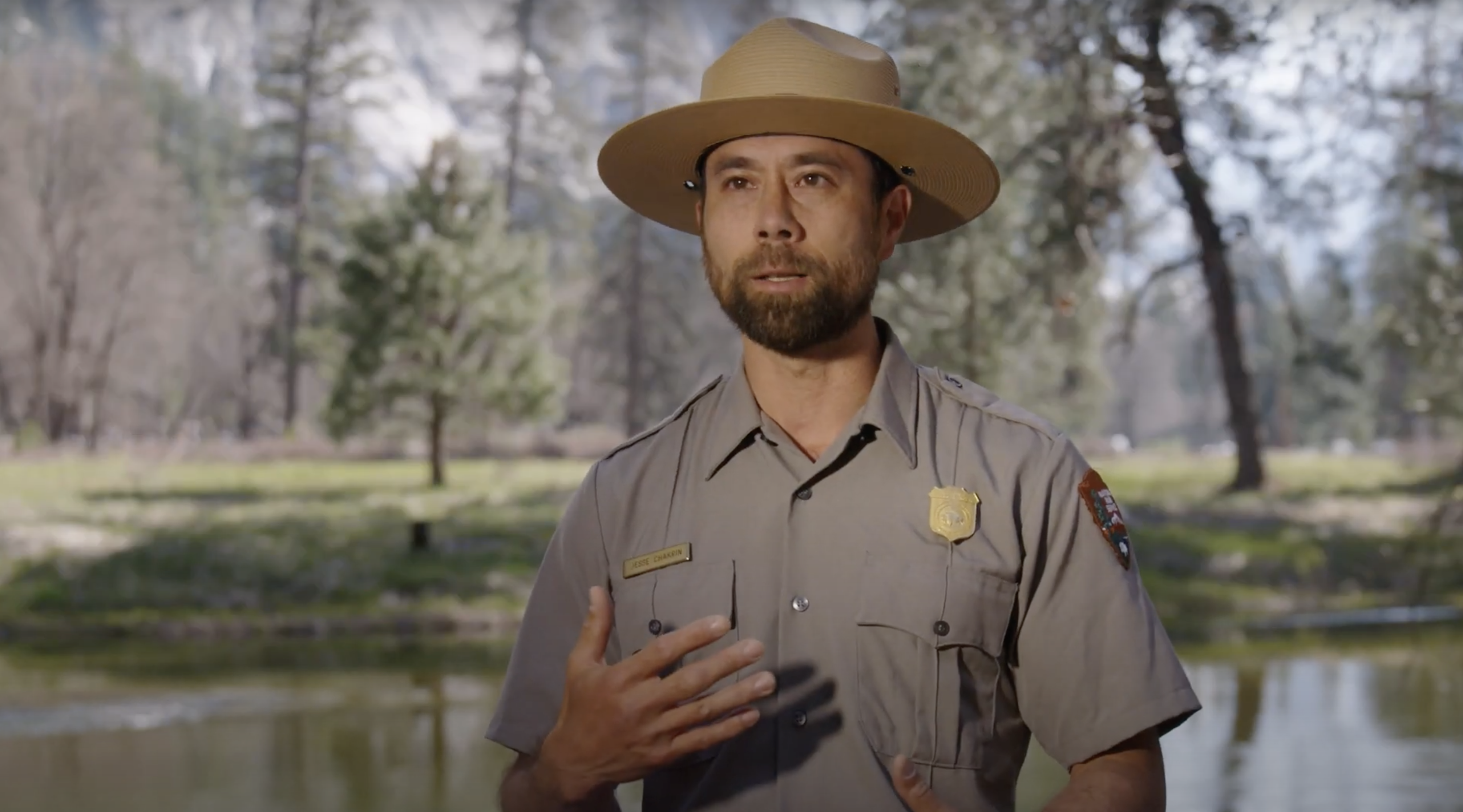
Just like Lum introduces the next generation of park stewards to Yosemite National Park, there are generations of rangers who have come before her. Rangers like Chakrin who has been a ranger in Yosemite National Park for 18 years, and Scott Gediman, Assistant Superintendent for Public & Legislative Affairs, who has been a ranger for 32 years.
For Gediman, the generational model is personal. He still gets choked up when he swears in Junior Rangers – which happens at the end of every field trip. He was a junior ranger when he was 13. “A long time ago,” Gediman says, but he still has his patch.
Each generation of rangers -- Gediman, Chakrin, and now Lum -- leaves a different mark on the park, bringing new ideas and helping the idea of national parks evolve as well.
"When we connect our college students with younger students, there’s this beautiful arc of, of perspective and learning, of experience that they bring and share that we don’t often see in programs because we as maybe rangers that have worked in parks for decades, maybe have a little bit more of a solid idea about what a national park is,” Chakrin said.
And all of the park rangers echoed the same thing – while national parks are in the perpetuity business, they aren’t guaranteed. It’s up to the next generation of park stewards to continue protecting and preserving.
“If we want [parks] to live forever, we need these ideas to be able to grow, change, and evolve over time,” Chakrin said. “And so allowing young perspectives to be the ones that teach younger perspectives, I think we have a better shot at national parks continuing to exist, not just in the physical space, but also in the ideas that they embody.”
Thanks To Our Partners
Generous funding from Youth Engagement & Education premier partner Union Pacific Railroad supported the Open OutDoors for Kids program at Yosemite National Park. Open OutDoors for Kids is made possible through support from Apple, Columbia Sportswear, Humana, Maverik, Parks Project, Sierra, and many other donors.
Related Content
